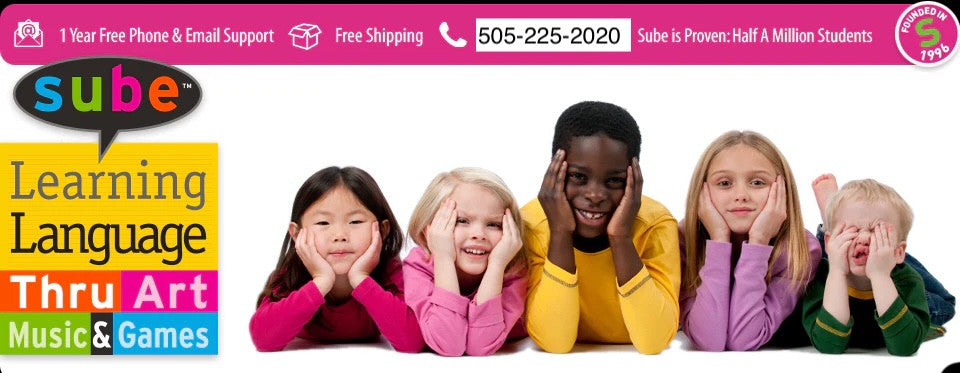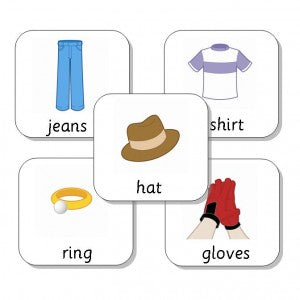Students will:
- Illustrate and color a life-size outfit using a list of clothing vocabulary and then match up each element by drawing labels from a basket.
- Create one or two collages of their favorite outfits from various magazine and then identify each item of clothing.
- Form complete sentences using the provided vocabulary, near and far pronouns, and contractions.
- Ask and answer questions based on their life-size outfits and collages.
- Create a Pinterest Board of favorite clothes and write the descriptive captions in target language (ages 12 and up).
Skills:
Vocabulary acquisition, grammar and communication, comprehension, fine motor skills, and color development.
21st Century Skill:
Use social media (Pinterest) to communicate and share likes and opinions in target language
Grouping:
Teams (Small Groups) and Individuals
Modalities:
Bodily-Kinesthetic, Verbal-Linguistic, Interpersonal, and Intrapersonal
Bloom’s Taxonomy:
Knowledge, Comprehension, Application, Evaluation, Synthesis
Materials:
-
Vocabulary “Labels”:
¡Encuéntralo! Labels (SSL): La Ropa
Match Up! Labels (ESL): Clothes - Large roll of butcher paper or 4-5 person-sized sheets of paper
- Markers
- Basket
- Tape
- Magazines
- Paper
- Glue
Preparation
- Using the vocabulary from the “Labels” provided, make a Word Wall or write out the words on your board.
- Print out your target language “Labels.”
- Cut the labels out and place them in a basket.
- Divide your class into groups of 2-3 students.
- Handout the markers and one sheet of person-sized paper to each group.
Life-Size Outfit | Version 1
- Working as a team, ask your students to draw as many of the objects from the Word Wall or vocabulary list all over the large paper and color them.
- Pin the papers on the wall.
- Bring out the basket with the labels.
- Have each student pick a label and say the name of the object.
- Have the class call out “¡Encuéntralo!” or “Match Up!” and then repeat the word chorally (2-3 times) as the label is stuck under the correct illustration.
-
Once the student has correctly placed the label, introduce common expressions to spiral the lesson from simple vocabulary acquisition to interpersonal communication skills. For example:
“It’s a . . .” “That’s a . . .” “Here’s an . . .”
“Es un . . .” “Ése es . . .” “Aquí hay . . .” - For less proficient classes, write those expressions on the board for easy reference.
- Point out that “it’s” and “that’s” are contractions for “it is” and “that is.”
Collage | Version 2
- Have your students return to their desks and distribute the magazines, paper, and glue individually.
- Again using the vocabulary from your Word Wall or board, ask students to cut out and glue pictures of clothes to a placemat-sized sheet of paper.
- Tell them to make one or two outfits that they’d love to wear.
- Once they have one to two complete outfits, instruct them to label each item in the target language.
- Students then hold up their collage and describe it to the class.
-
Encourage formal and informal comments and always work at constructing complete sentences. For example:
“What’s that on her head?” “This man is wearing a blue and green jacket.” “That coat is cool!” “Her pants are bigger than his.”
“¿Qué es lo que tiene en su cabeza?” “Este hombre lleva una chaqueta negra.” “¡Qué abrigo tan suave!” “Su camisa es más grande que la de ella.” - For English classes, point out that a student describing his/her picture will use “this” and “these” because the picture is near them; other students should use “that” or “those” since the picture is not near them.
- For Spanish classes, point out that a student describing his/her picture will use “este/esta” and “estos/estas” because the picture is near them; other students should use “ese/esa/aquel/aquella” or “esos/esas/aquellos/aquellas” since the picture is not near them.
Q&A | Version 3
- Divide the class into two groups.
-
In the target language, one group asks questions of the group labeling the picture:
“What color is your shirt?” “How many shirts do you have at home?” “Do you like my shirt?” etc.
“¿De qué color es esa camisa?” “¿Cuántas camisas tiene usted en su casa?” “¿Te gusta ese sombrero?” etc. - Try giving out points, grades, or other rewards to encourage engagement in both asking and answering questions.
Tech Tools | Pinterest Clothes
- For older students (12 and up), ask them to create their own Pinterest board called "My Fashion Picks" or something similar.
- Have students search the web and other Pinterest boards for clothes items that interest them.
- In the target language, ask students to write a caption for each pick that describes what they like or dislike about the item, or share opinions. For example, if a student chooses skateboard clothes they can describe why the item is useful for that sport or if they choose a sweater because they would like to have it they can describe the qualities that they like: "I like the color and the sleeves."
- Have this project run over the course of a week to accumulate pins, then have students follow each others boards and repin the ones they like.
- At the end, have a class discussion about the experience and invite your class to share what they liked or disliked about the activity.
- Lastly, you can encourage students to come up with another Pinterest activity around the clothes theme like prom, homecoming, graduation, etc.

